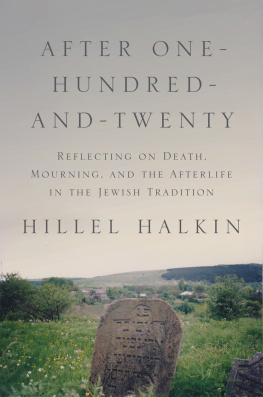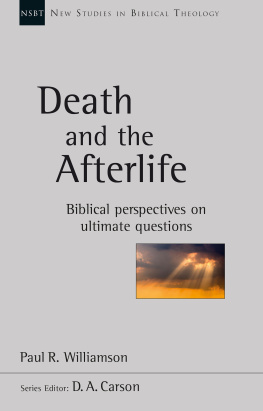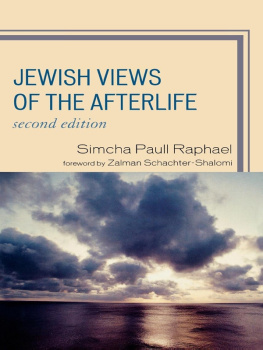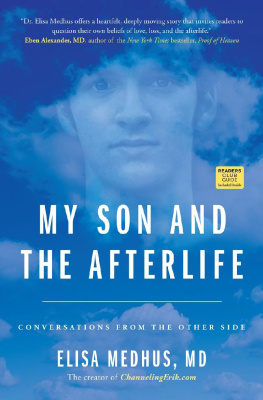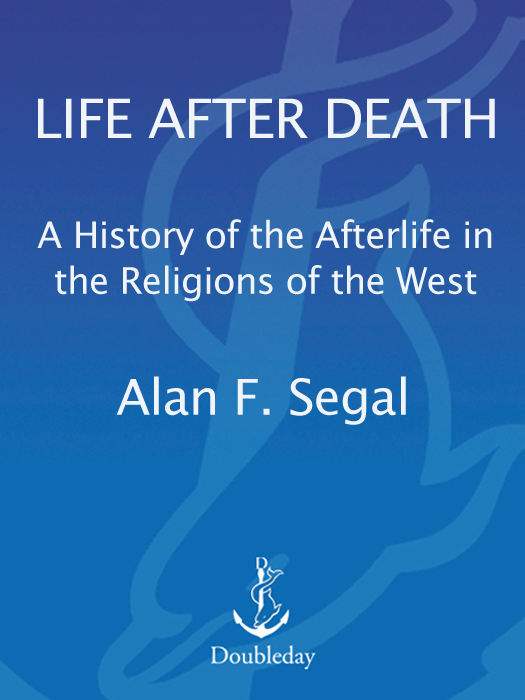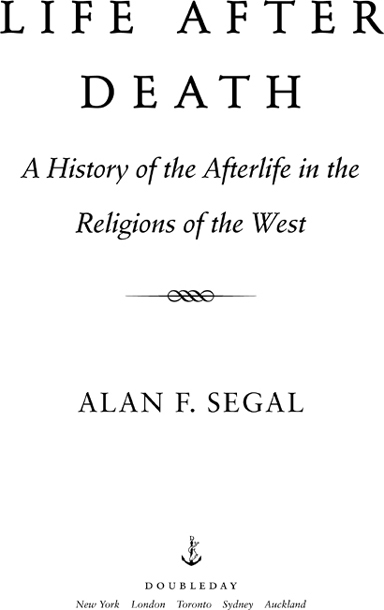JULIA CHING, NILS A. DAHL, RENE GEEN,
HARVEY GOLDEY, DONALD JUEL, MORTON KLASS,
WILLARD G. OXTOBY, BENNETT P. SEGAL
ACKNOWLEDGMENTS
In ten years of living with this project, I sought help from many persons, first in writing the constantly expanding scope of the work, then in condensing the material to a more readable text. I want to thank Jim Charlesworth, who suggested I work on this project, and Andrew Corbin for his advice on how to defeat my own obsessiveness and compulsivity to finish the book-he was an invaluable aid at every stage of the books creation.
I especially want to cite Will Oxtoby, who offered his critique at several important junctures and his practiced eye as an editor. My graduate students helped by reading and commenting on the text, especially in the early phases. In particular, I would like to thank Adam Gregerman, who served as a research assistant and helped me edit the first draft. Asha Moorthy, Lillian Larsen, Nick Witkowski, Jason Yorgason, and Delman Coates were very helpful in reading through the early drafts of the manuscript and helping me see some of the issues more clearly. Innumerable undergraduate students helped me with various aspects of the study, and they are thanked in the appropriate place. I would like to thank Darcy Hirsh especially; she served as research assistant and helped me focus my discussion on gender issues.
When this project was done, it was hard to impose on a friend so much to read this huge manuscript. But John Gottsch, Andr Unger Carol Zaleski, and David Ulansey each offered to help in extraordinary ways by reading the whole thing through and offering their expert opinions on the subject and flow of the argument. Larry Hurtado read through several New Testament chapters and offered expert opinion, as well as his critique. Ben Sommers did the same with the Hebrew Bible chapters and suggested areas where my graduate studies in Ancient Near Eastern Studies needed to be renovated. Although none took my point of view on the manuscript, they helped me make my arguments more cogent, and I am grateful to all of them. I would especially like to thank David N. Freed-man who read the manuscript very carefully and offered extensive suggestions.
Over the last dozen years I have received several grants that allowed me to spend time on this manuscript. I would especially like to thank Barnard College, which supported my research in countless ways over the last decade, and to my students there-both from Columbia and Barnard-who asked fundamental questions and so helped develop the book. Teaching graduate courses at Columbia University and participation in the graduate program allowed me to concentrate on the scholarly aspects of the book. The Annenberg Institute for Advanced Jewish Studies provided a semester of support and a group of concerned scholars with whom to consult. Williams College appointed me a Croghan Scholar that allowed me to try out my ideas in the wider community through lectures and discussions. I would also like to thank the Mellon Foundation for a semester grant to pursue Islam and diaspora religion and the ACIS and NITLE for providing a summer seminar with extraordinarily interesting colleagues for the development of a Web site on Islam. This helped me resurrect my earlier studies in Arabic and Islam and reach a new level of comfort in dealing with Muslim texts and concepts.
I would like to acknowledge work published elsewhere in different form: Text Translation as a Prelude for Soul Translation in Translation and Anthropology (Ed. Paula G. Rubel and Abraham Rosman, New York: Berg, 2003), Jesus at 2000, and some parts of Paul the Convert.
A. F. SEGAL
New York, 2003
ABBREVIATIONS
Abbreviations in the notes and parenthetically in the text for the books of the Bible; Old and New Testament Apocrypha; Old and New Testament Pseudepigrapha; Dead Sea Scrolls and other texts from the Judean Desert; versions of the Taludic tractates; Targumic texts and other Rabbinic works; and Ancient and Classical Christian writings are those given in the SBL Handbook of Style (Ed. Alexander, Kutsko, Ernest, and Decker-Lucke, Hendrickson, 1999). Abbreviations for secondary sources are listed below.
| AB | Anchor Bible |
| AGJU | Arbeiten zur Geschichte des antiken Judenthums und des Urchristentums |
| ANET | Ancient Near Eastern Texts Relating to the Old Testament. Ed. J. B. Pritchard. 3d ed. Princeton, 1969. |
| ANRW | Aufstieg und Niedergang der rmischen Welt: Geschichte und Kultur Roms im Spiegel der neueren Forschung. 1972-. |
| BJS | Brown Judaic Studies |
| CAH | Cambridge Ancient History |
| CANE | Civilizations of the Ancient Near East. Ed. J. Sasson. 4 vols. New York, 1995. |
| CBQ | Catholic Biblical Quarterly |
| DJD | Discoveries in the Judaean Desert |
| EncJud | Encyclopedia Judaic. 16 vols. Jerusalem, 1972. |
| EPRO | Etudes preliminaries aux religions orientales dans lempire romain |
| ER | The Encyclopedia of Religion. Ed. M. Eliade. 16 vols. New York. |
| HR | History of Religions |
| HTR | Harvard Theological Review |
| HUCA | Hebrew Union College Annual |
| IDE | The Interpreters Dictionary of the Bible. Ed. G. A. Buttrick. 4 vols. Nashville, 1962. |
| JAOS | Journal of American Oriental Studies |
| JBL | Journal of Biblical Literature |
| JE | The Jewish Encyclopedia. Ed. I. Singer. 12 vols. New York,1925. |
| JJS | Journal of Jewish Studies |
| JQR | Jewish Quarterly Review |
| JSJ | Journal for the Study of Judaism in the Persian, Hellenistic, and Roman Periods |
| JSNT | Journal for the Study of the New Testament |
| JSOT | Journal for the Study of the Old Testament |
| JSPSup | Journal for the Study of the Pseudepigrapha, Supplement Series |
| JSS | Journal of Semitic Studies |
| JTS | Journal of Theological Studies |
| KTU | Die keilalphabetischen Texten aus Ugarit. Ed. M. Dietrich, O. Loretz, and J. Sanmartin. AOAT 24:1. Neukirchen-Vluyn, 1976. |
| NHL | Nag Hammadi Library in English. Ed. J. M. Robinson. 4th rev. ed. Leiden, 1996. |
| NovT | Novum Testamentum |
| NRSV | New Revised Standard Version |
| NTS | New Testament Studies |
| PGM | Papyri graecae magicae: Die griechischen Zauberpapyri. Ed. K. Priesendanz. Berlin, 1928. |
| RB | Revue Biblique |


